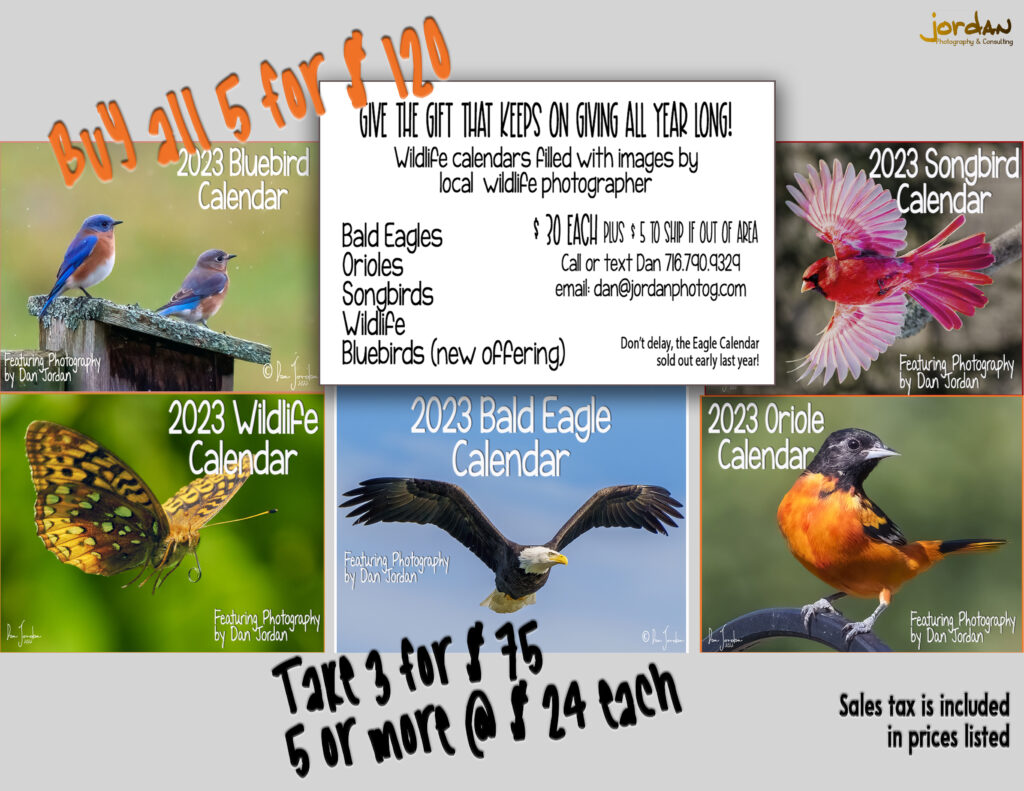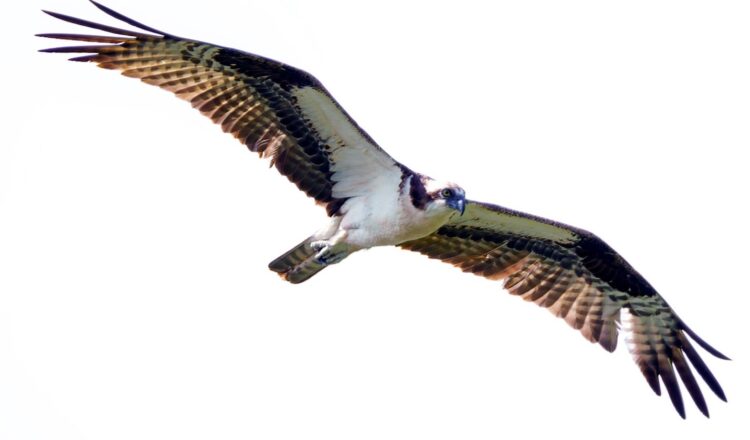Amazing insight and images of our native “fish hawk”
By Dan Jordan, Jordanphotog.com
Ospreys are a fairly common sight in our area. Many people confuse them with bald eagles, especially when seen from a distance, due to their white (mostly) heads. Ospreys are also known as sea hawks, fish hawks, and even river hawks, but are not true hawks. Ospreys are the only species in its classification of raptors (Pandiondae) while several species of hawks make up the classification Accipitriade. Most common of the hawks in our area are the red-tailed hawks.
Ospreys dine almost exclusively on fish, so their nesting sites are almost always near a body of water suitable for fishing. Unlike eagles, ospreys often nest on manmade platforms. I have
people tell me of eagle nest sightings often but when they tell me that the nest is on a telephone pole or other structure, I tell them that it is likely an osprey nest, not an eagle nest. Eagles rarely use manmade structures for their nests.
Osprey platforms can be spotted atop power poles all throughout our area, there are 5 that I watch within a couple of miles from my home. The water features off Birch Run in the town of Allegany has two active nests built on manmade structures.
Ospreys are a conservation success in upstate NY. Much like bald eagles, which saw their numbers decimated in the 50’s and 60’s, mostly due to the pesticide DDT, ospreys were endangered. In 1972, DDT was banned, and the osprey numbers slowly rebounded. Ospreys were reintroduced to WNY by the NYSDEC in the 1980’s with tremendous success. They have now been downgraded from endangered to a “species of special concern” by the DEC.

Ospreys are large raptors with wingspans of between 4 and 6 feet. They are skilled fliers and superb fishers. Their high-speed dives into the water to nab a fish are something to behold. They sometimes completely submerge in an effort to capture a fish.
Ospreys are migratory, spending April through September in our area. They spend this time efficiently, repairing and shoring up their nests, breeding, and raising their young. They return to the same nesting site year on year. Their nests start out at about 4-feet wide but grow over time.
The most amazing fact about ospreys (to me) is that when they migrate, most fly all the way to South America. Don’t compare that with getting on a jet and flying to South America, or even driving your car. Compare that with walking to South America!
Ospreys are quite vocal, their call is like “kew, kew, kew”. When their call gets faster, louder, and more frantic, it’s a sign that the bird is agitated, and if you’re the source of that agitation, it’s best to move on. You really don’t want to feel those talons grabbing your head!
Ospreys and eagles do not coexist very well. They compete for the same food and eagles have been known to rob osprey nests of their young. I recently witnessed an osprey chase off a pair of bald eagles fishing at Barnum swamp in Eldred, PA. All three were in flight and an aerial confrontation occurred. To my amazement the two eagles flew off, leaving the fishing to the osprey.
Young ospreys fledge at about 8 weeks and then the fledglings have a short time to learn to survive before making that arduous flight south. They must first learn to fly, then fish, then survive what Mother Nature throws their way.
Ospreys live from 7-10 years typically, which is quite a feat, given what they go through to survive.
One last fact before I share more photos, young ospreys can identified easily if you have binoculars or a long lens. Ospreys have bright red eyes during their first two years of life but adult ospreys have yellow/gold eyes.
This photo shows a breeding pair of ospreys on a nest near Vandalia, NY in June of 2020.
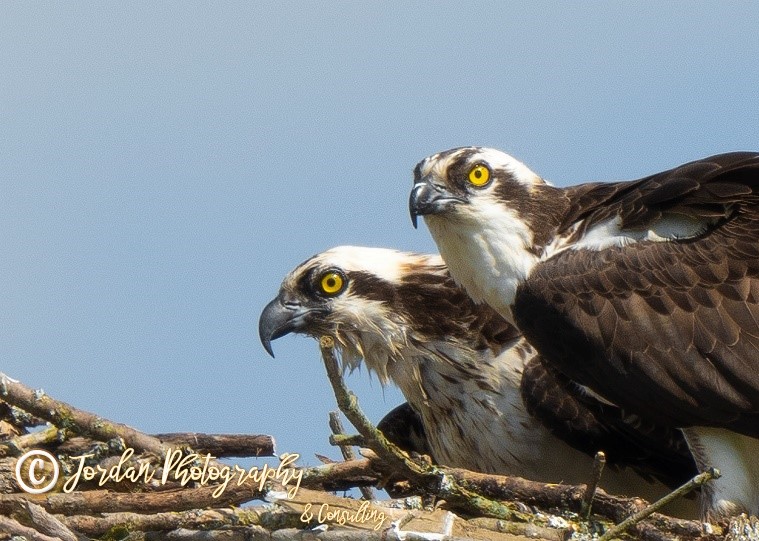
The next photo shows the same pair in April of 2021 engaged in their mating ritual. The male is seen carrying in a stick for shoring up the nest while the female is “asked” for her approval. This photo clearly shows how to identify the genders. Females have a “necklace” on their chests, while the males’ chests are white.
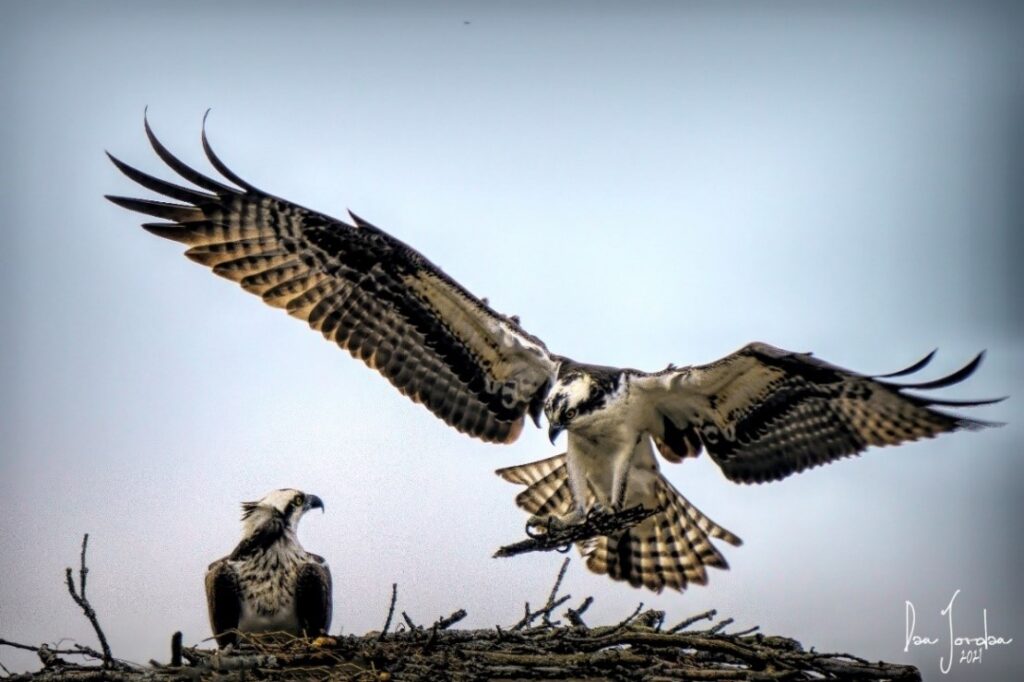
Then next photo shows the female of the Vandalia pair looking skyward for her mate who was calling to her. You can clearly see her “necklace” in this photo.
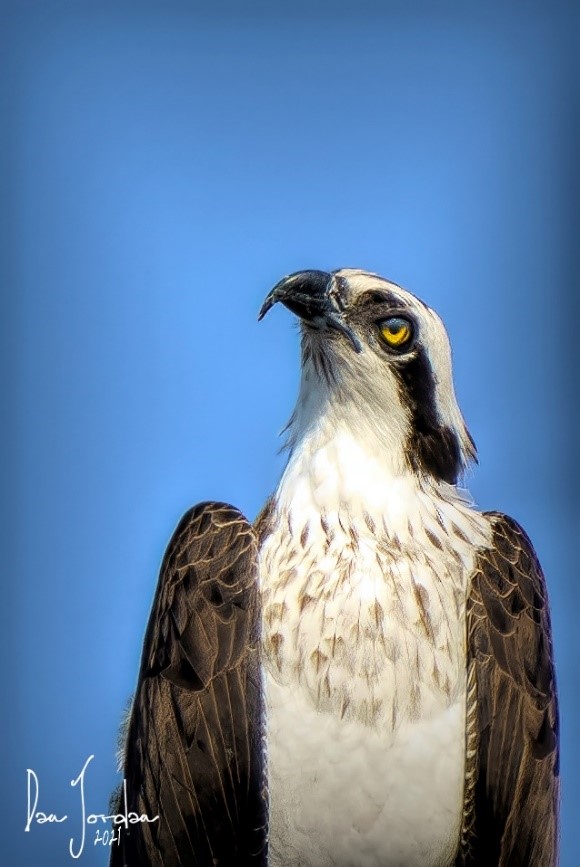
The next photo shows the Vandalia female engaged in an interesting activity. Ospreys (and other raptors) will move their heads from side to side, often fairly rapidly. This is an aid in depth perception for them. They increase the angle of viewing and can therefore calculate depth and distance more accurately. Sometimes this looks like “disco-dancing” to me, their motion is so rapid and repetitive.
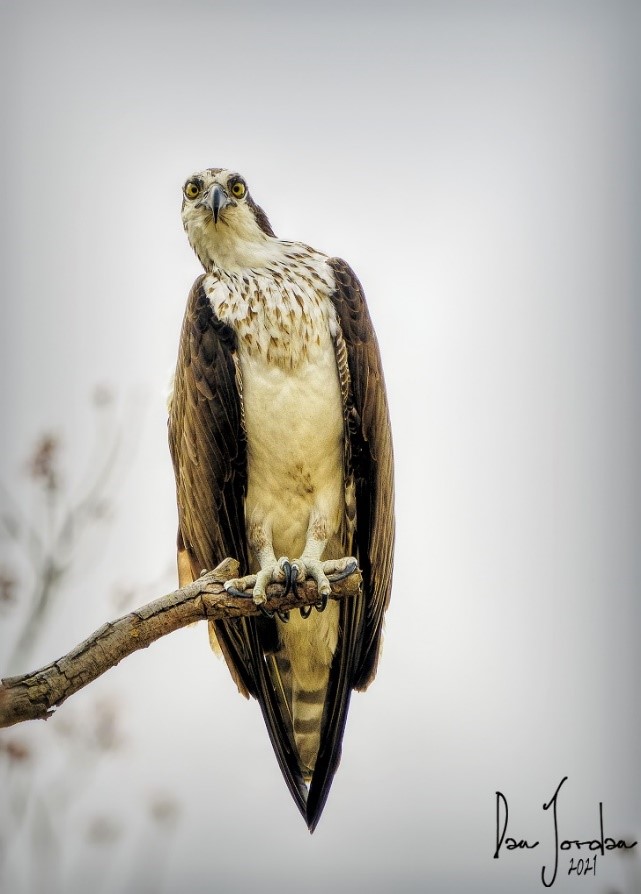
The next photo shows an adult male osprey perched high atop a dead tree in the early morning sunlight. This photo was taken on April 14, 2022 in Vandalia. Check out those talons!
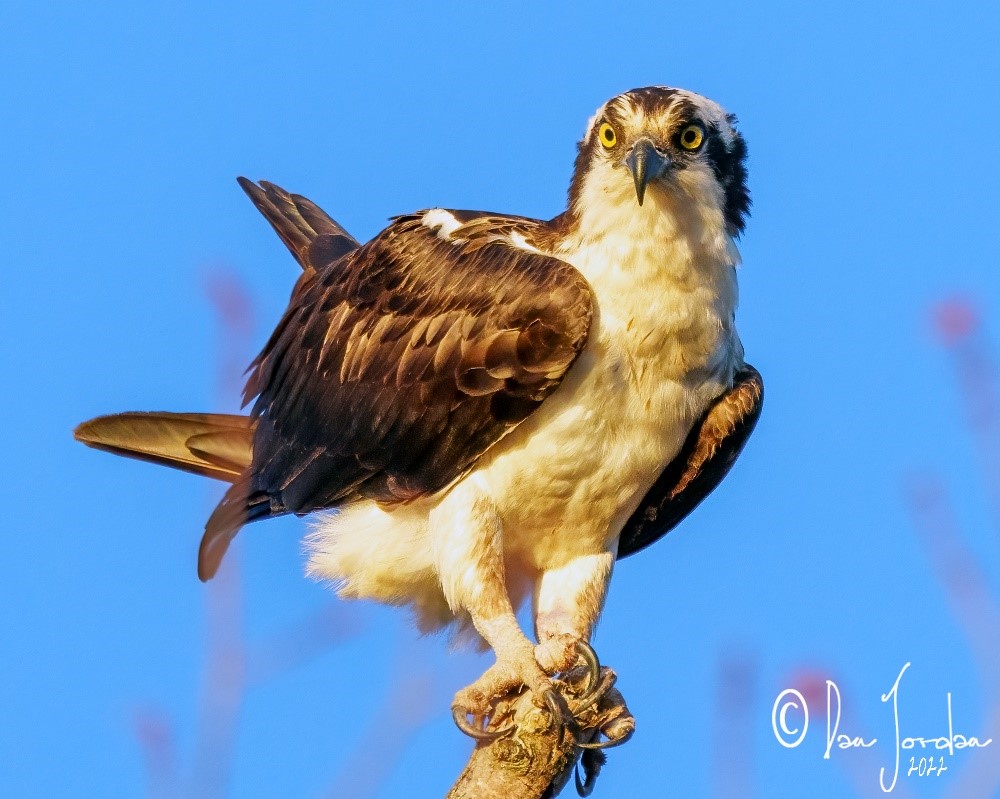
The next photo shows a female osprey landing on a dead tree at sunrise. As she was landing, she was calling to her mate. The male was flying overhead and landed in a nearby tree. This photo was taken on August 23, 2022.
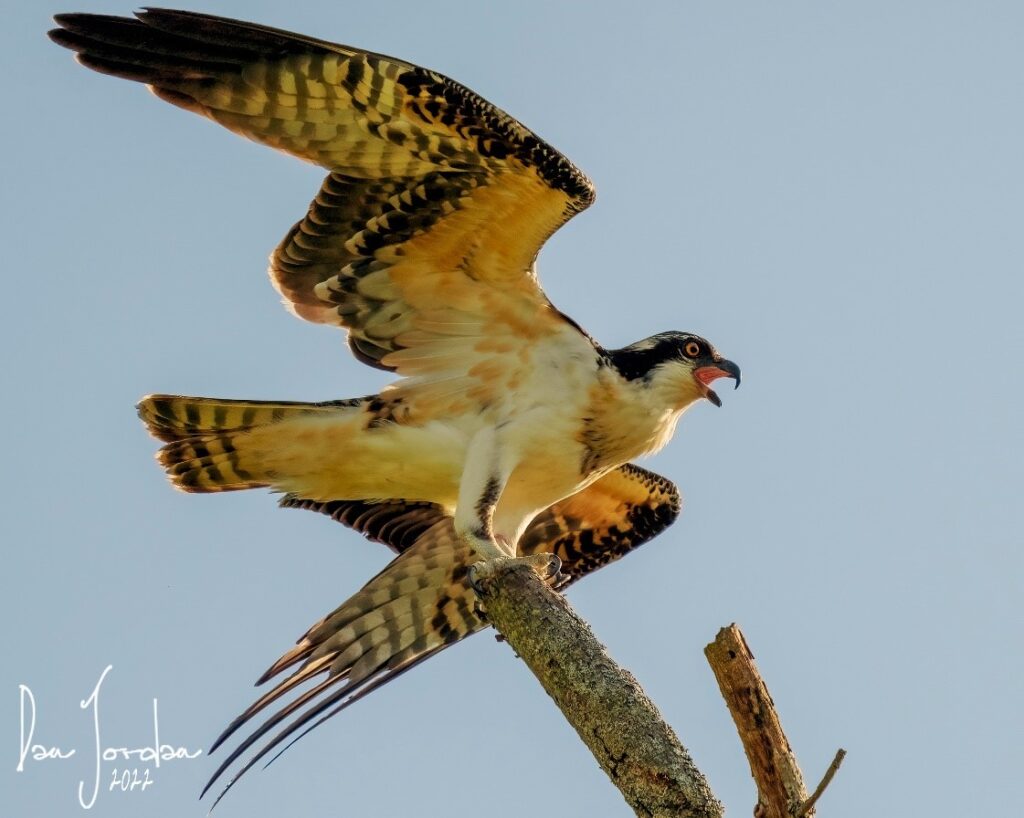
The above photo is a closeup of the male osprey of one of the Vandalia pairs. Note the yellow eye and the lack of the “necklace”. Both are indicators that this is an adult male osprey.
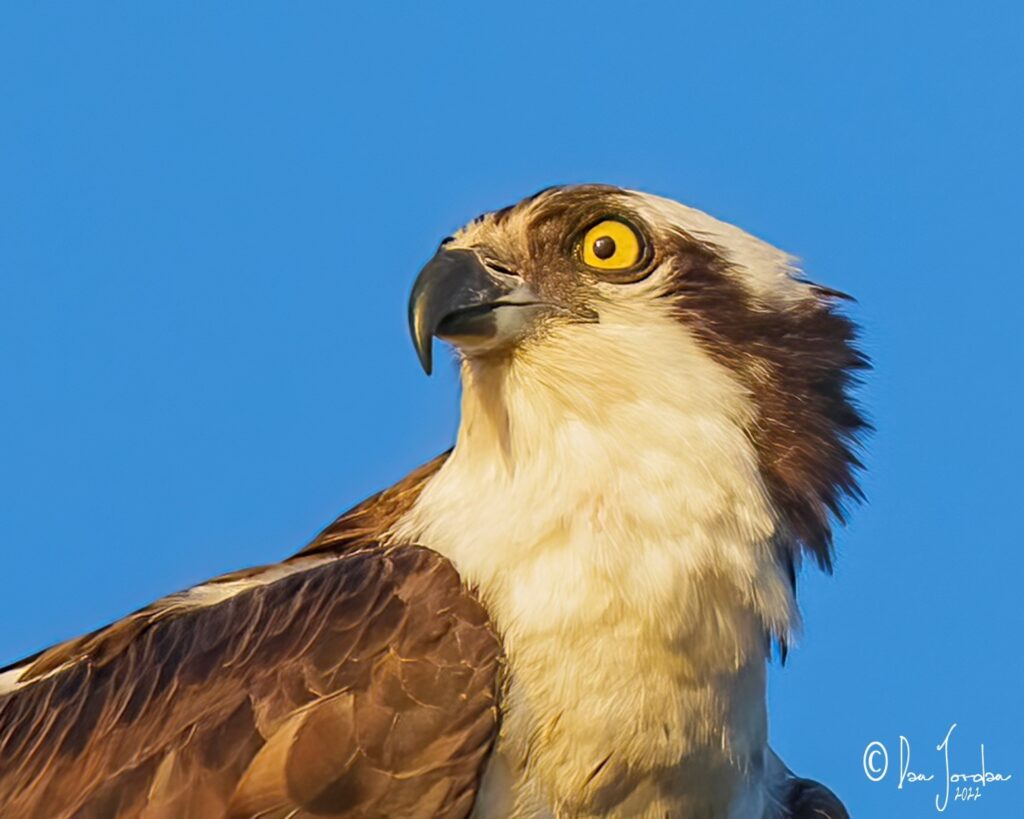

The last photo was captured at Allegany State Park. I noticed an adult osprey flying from Quaker Lake with a fish in its talons. I had been photographing a juvenile osprey on a nest nearby and was hoping that the adult would be delivering the fish to that nest. Sure enough, in she flew, and I caught several images of her delivering the fish to her youngster. Note the red eye of the juvenile in this photo. This image is my favorite from that sequence. It was captured on July 31, 2022.
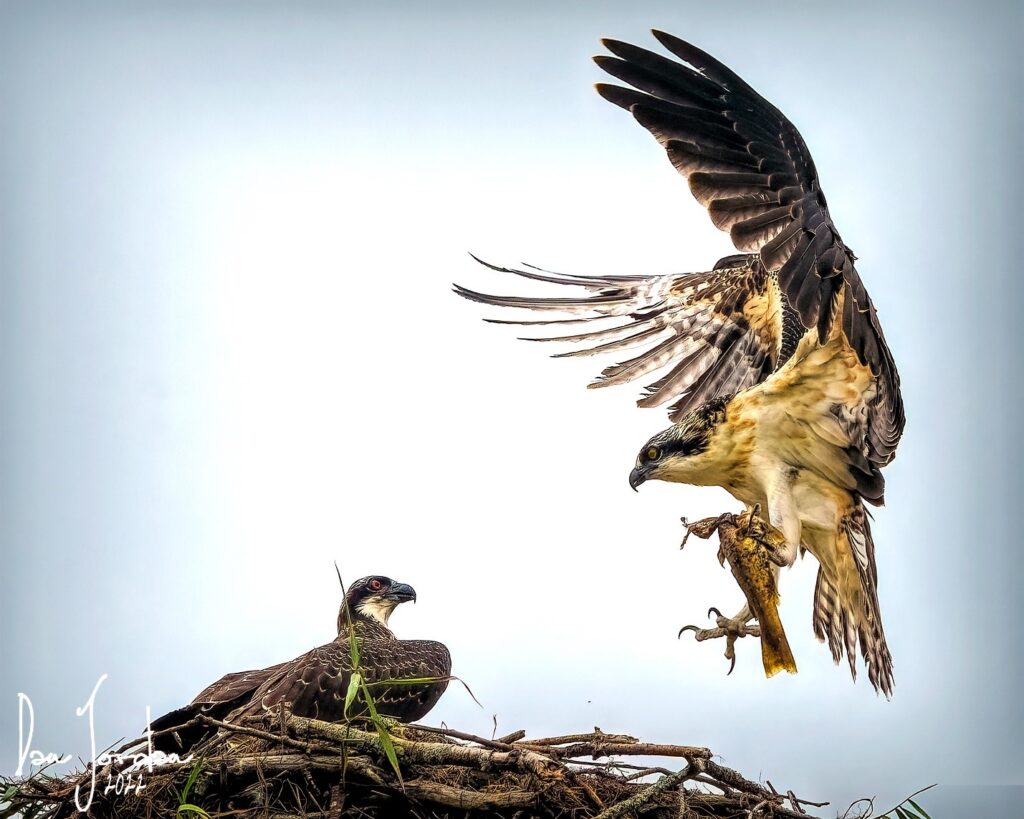
I hope that you have learned a little about ospreys from this article and have enjoyed these few of my many osprey photos.
Keep your eyes open for osprey nests on tops of power poles, any time you are near a pond, lake or river. You’re much more apt to see a nest than an osprey itself. That is, unless it is during nesting season, when you might see 2-3 hatchlings on the nest and possibly an adult feeding them.
Dan Jordan is an Allegany resident, a professional photographer, scientist, and nature lover. Many of his photos are on display at his studio in Olean, NY and on his Facebook page.
Love Dan’s work? Check out his calendar collection!
Great gifts for the birdy person in your life! Just tap to email Dan
